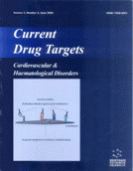Abstract
The term peripheral arterial disease (PAD) is often used to describe atherosclerosis involving the arteries supplying the lower extremities. Potentially modifiable factors that predispose to the development and progression of both symptomatic and asymptomatic PAD include smoking, diabetes mellitus, hyperlipidemia, and hypertension. Since the same risk factors for PAD predispose to the development of systemic atherosclerosis, identification of PAD increases the likelihood of coexistent coronary heart and cerebrovascular disease. Even after adjustment for risk factors, PAD appears to increase the risk for ischemic manifestations involving these other vascular territories with about a 2-fold increase in myocardial infarction and perhaps stroke. The most dramatic consequence of PAD is impaired survival with a 2- to 3-fold increased risk of 5- to 10-year mortality. While the adverse cardiovascular and cerebrovascular complications are highest for persons with more severe PAD, there is still a significant risk in persons with mild and even asymptomatic disease. The focus in the management of PAD should be on early diagnosis and efforts to reduce the risk of adverse events including risk factor modification and antiplatelet therapy.
Keywords: cardiovascular morbidity, peripheral arterial disease, asymptomatic pad, diabetes mellitus
 4
4













